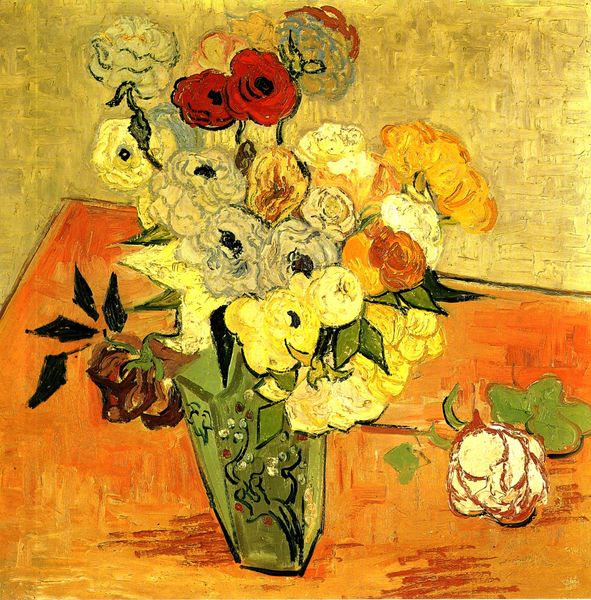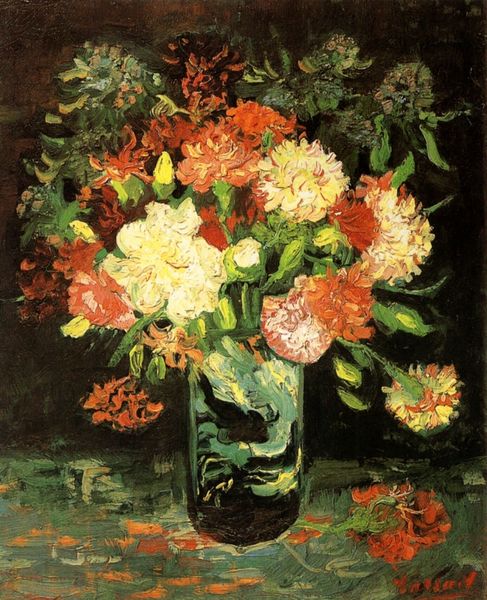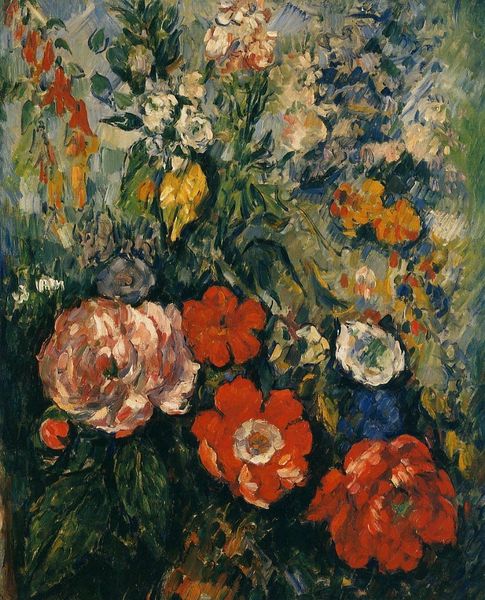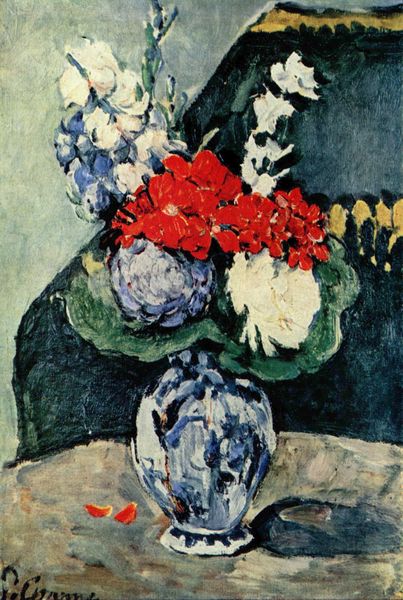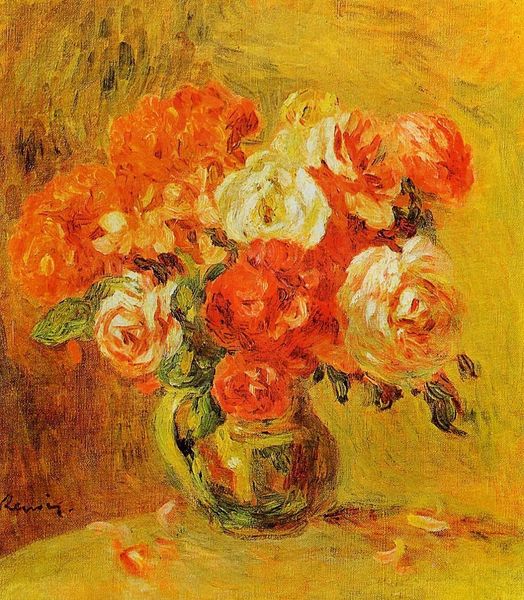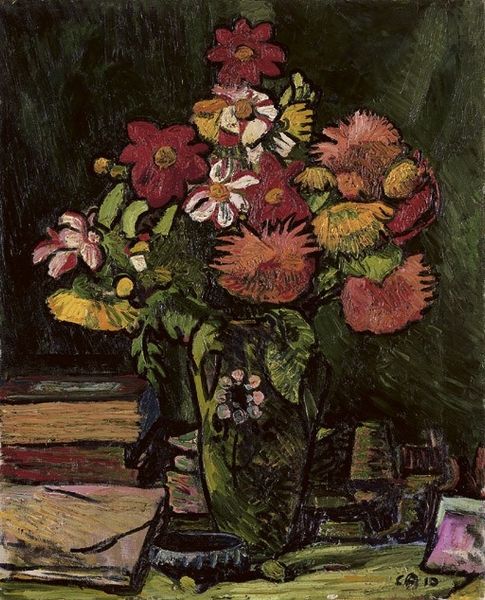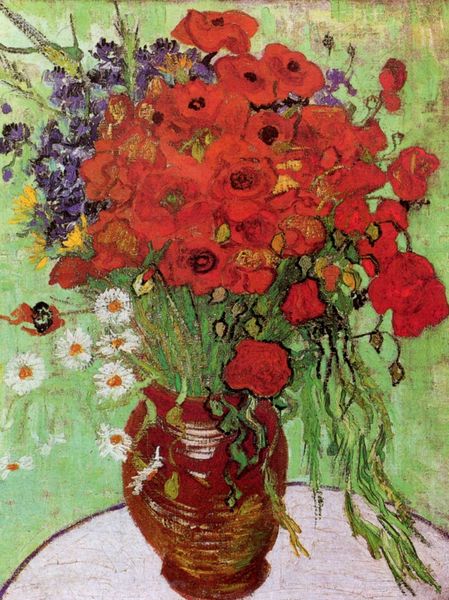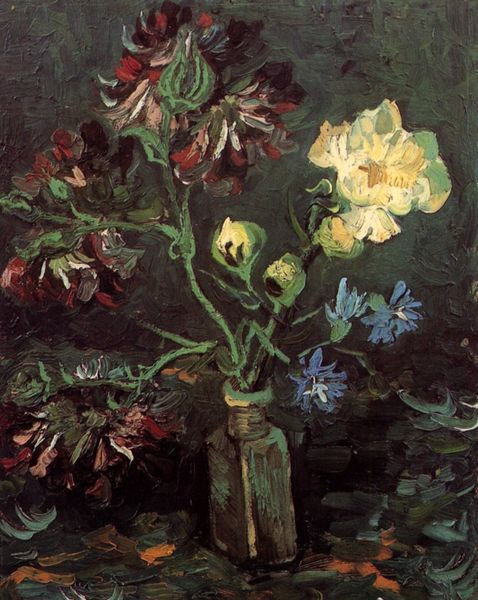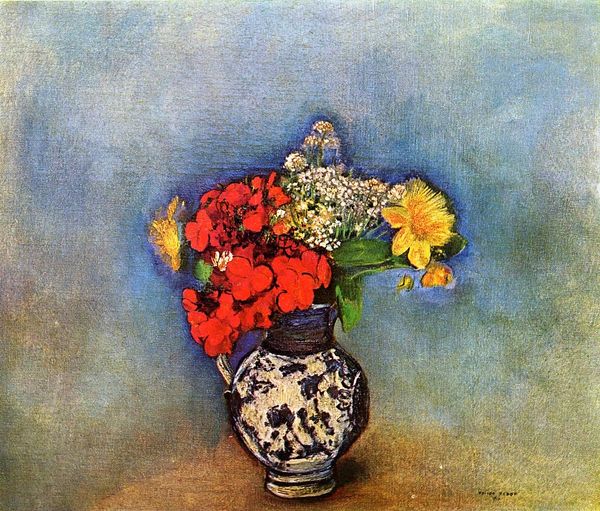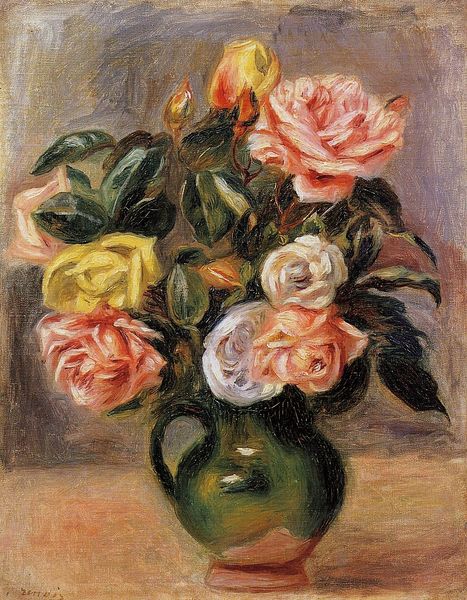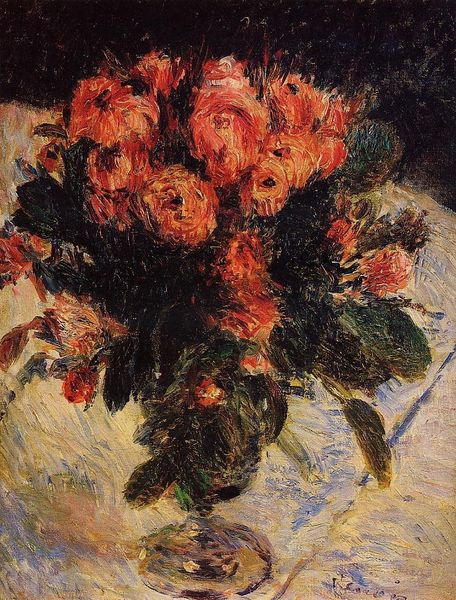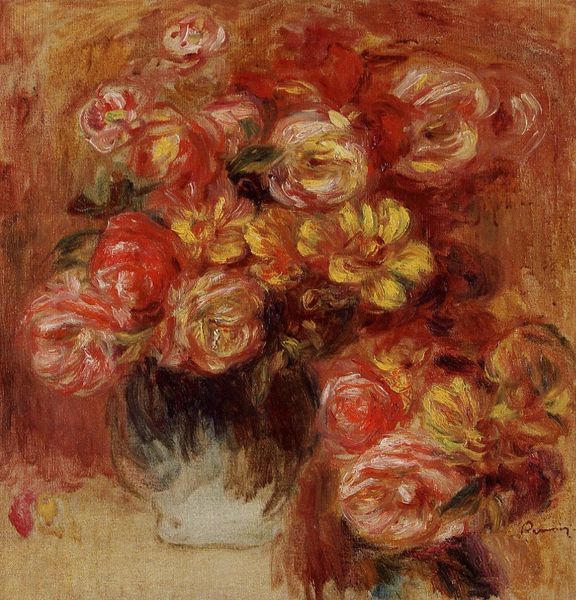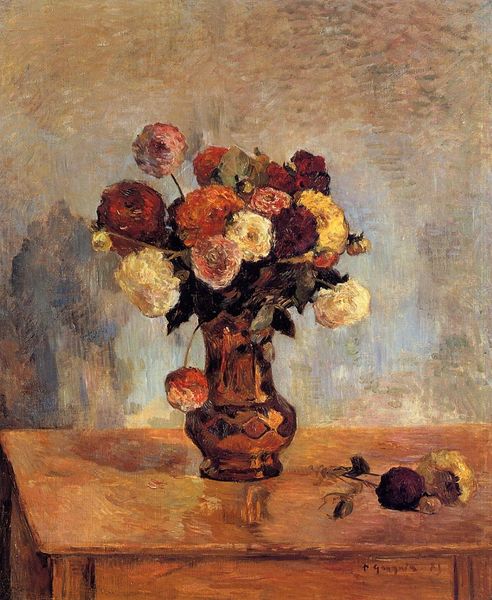
painting, oil-paint
#
dutch-golden-age
#
painting
#
oil-paint
#
flower
#
plant
#
post-impressionism
Dimensions: 42 x 29 cm
Copyright: Public domain
Editor: Van Gogh's "Still Life Vase with Rose-Mallows," painted in 1890, uses such thick strokes of oil paint. I find it incredibly vibrant despite the somewhat muted palette. How do you interpret the symbolism here? Curator: Well, let’s consider the flower itself. Rose-mallows, or hollyhocks, often symbolized ambition in the Victorian language of flowers, perhaps a coded message of aspiration and reaching toward something greater. Does that tie in with Van Gogh's emotional or artistic life, do you think? Editor: That's interesting! Given his struggles and artistic ambition, that makes a lot of sense. But the overall feeling is not entirely celebratory, right? The background seems almost oppressive. Curator: Precisely! The contrast between the vibrant blooms and the murky, almost suffocating background suggests a struggle. It hints at an underlying tension. What about the color choices – anything striking there? Editor: The reds and greens stand out against the softer pinks and yellows. It’s as if he is pitting complimentary colors together, generating heat. Is it an expression of optimism battling against despair? Curator: Exactly. Think about the tradition of still life painting – “vanitas” – paintings that traditionally remind us of mortality and the transience of beauty. The wilting, oversized blooms perhaps represent that. Editor: So, a reminder that even in beauty, there’s an inherent sense of melancholy? Curator: Yes, a visual metaphor – flowers as emblems of hope contending with shadow, the inevitable fading inherent in life. It really highlights his struggle. Editor: That really makes you appreciate the intensity of emotion he conveyed through simple subjects. Thanks for pointing out the history embedded within such simple flowers!
Comments
No comments
Be the first to comment and join the conversation on the ultimate creative platform.
